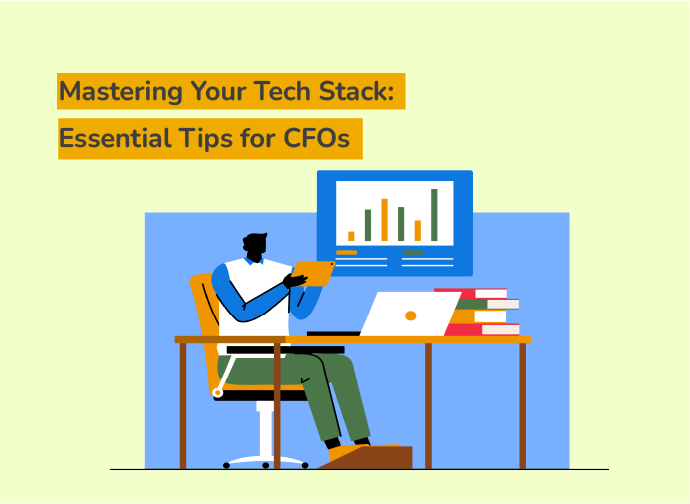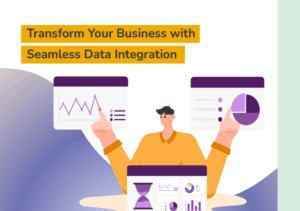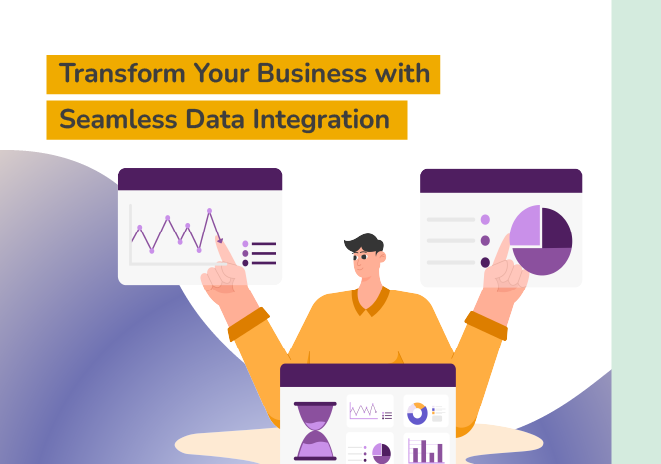What is a tech stack and why is it important for CFOs?
A
tech stack is a combination of technologies used by companies to build and run their applications and services. For CFOs, a well-structured tech stack is crucial for streamlining
financial management and ensuring accurate reporting. It allows for better data integration and analysis, which aids in strategic decision-making. Common tech stacks for CFOs include financial software like ERP systems, cloud computing platforms, and data analytics tools. These elements work together to enhance operational efficiency and deliver valuable financial insights.
Key Takeaways
- A tech stack is essential for effective financial management, aiding CFOs in decision-making and ensuring operational efficiency.
- CFOs must regularly assess their tech stack for scalability, cost-efficiency, and ease of integration to optimize financial processes.
- Common tech stack components for CFOs include ERP systems, financial software, and analytics tools to meet financial objectives.
- Emerging technologies like AI and cloud-based solutions are transforming financial management by enhancing real-time data analysis.
- Seamless integration of new technologies requires structured planning, pilot testing, and thorough training programs.
- Regular audits and proactive planning ensure a tech stack remains up-to-date and aligned with organizational goals.
- Staying informed on tech innovations allows CFOs to maintain a competitive edge by efficiently managing financial operations.
Definition of a tech stack
A
tech stack is a combination of technologies and tools used by companies to build, manage, and improve their operations. For
CFOs, understanding the right tech stack is crucial for effective financial management. A well-structured tech stack can streamline processes, improve data accuracy, and enhance decision-making. It encompasses software solutions like
ERP,
CRM, and
BI tools. By leveraging an optimized tech stack, CFOs can drive efficiency and ensure alignment with business goals.
Importance of a tech stack for financial management
A well-designed tech stack is crucial for CFOs aiming to streamline financial management. By integrating various software and platforms, a strategic tech stack enhances data accuracy, provides real-time financial insights, and increases operational efficiency. It serves as the backbone of financial operations, enabling CFOs to make informed decisions, manage risk, and drive growth. Many executives leverage tech stacks tailored to their unique business needs, ensuring comprehensive support for financial processes.
Examples of tech stacks commonly used by CFOs
CFOs rely on specialized
tech stacks to streamline financial management and drive strategic growth. A CFO’s tech stack typically includes
ERP systems, financial planning software, and
analytics tools tailored to meet financial objectives. Popular examples are
SAP, Oracle, and
NetSuite, which offer comprehensive solutions for accounting, budgeting, and forecasting. Tech stacks often incorporate
automation software for efficient data processing and
real-time insights, empowering CFOs to make informed financial decisions and maintain a competitive edge.
| Tech Stack Component |
Example Software |
| ERP System |
SAP, Oracle |
| Analytics Tools |
Tableau |
| Financial Software |
NetSuite |
How can CFOs evaluate their current tech stack?
For a CFO, evaluating the current
tech stack is crucial for maximizing
efficiency and meeting organizational goals. Begin by assessing the stack’s
effectiveness through criteria such as cost, scalability, and compatibility with existing systems. Identify any
gaps or inefficiencies that may hinder performance. Utilize tools and platforms designed for tech stack evaluation to gain insights into potential improvements. A thorough review ensures that your financial management systems remain robust and up to date, aligning with company objectives.
Criteria for assessing tech stack effectiveness
Evaluating the effectiveness of your tech stack is crucial for achieving optimal financial management.
CFOs must ensure their technology solutions align with organizational goals by considering performance, scalability, and cost-efficiency. Additionally, the ease of integration with existing systems and the ability to provide real-time data insights are key factors. Identifying gaps and inefficiencies can lead to improvements in process automation and overall efficiency, reinforcing the tech stack’s role in strategic decision-making.
„Key criteria for assessing tech stack effectiveness include performance, scalability, cost-efficiency, integration capabilities, and data insights.“
Identifying gaps and inefficiencies
For CFOs,
evaluating the tech stack is crucial to pinpoint
gaps and
inefficiencies that can hinder financial operations. A
comprehensive analysis involves examining the integration of current tools, assessing their ability to meet business needs, and identifying redundancies that may be causing inefficiencies. This process ensures that CFOs can streamline processes and optimize performance by making informed decisions about necessary upgrades or new tools.
Tools for tech stack evaluation
Evaluating your tech stack is vital for CFOs to optimize financial management and drive efficiency. Start by assessing the effectiveness of your current tools, focusing on criteria like
scalability,
integration capabilities, and cost-efficiency. Identify any
gaps or inefficiencies that could hinder workflows. Leverage specialized tools to analyze and evaluate the stack, ensuring it aligns with organizational goals and modern technology needs. A thoughtful review can lead to significant improvements in
productivity and overall
financial performance.
What are the key elements of an effective tech stack for CFOs?
Crafting an effective tech stack is vital for CFOs aiming to streamline financial operations and enhance decision-making. Essential elements include core financial management software, which integrates seamlessly with existing systems, offering real-time data access and analytics. Prioritizing components that align with organizational goals ensures efficiency. An ideal tech stack also facilitates adaptability, allowing for easy integration of emerging technologies. By focusing on these critical elements, CFOs can enhance strategic planning and drive significant outcomes.
Core components of a CFO-focused tech stack
A CFO-focused tech stack is essential in today’s digital age, ensuring financial leaders can effectively manage resources and drive organizational success. This stack typically includes
accounting software,
ERP systems,
data analytics tools, and
cybersecurity measures. Integrating these core components facilitates streamlined processes and accurate reporting, empowering CFOs to make strategic decisions. Prioritizing elements that enhance scalability and connectivity with existing systems is key to leveraging a tech stack that supports growth and resilience.
Integrating financial software with existing systems
Integrating
financial software with existing systems is crucial for
CFOs seeking to optimize their organizations’ financial operations. To deliver seamless integration, it is vital to assess current
infrastructure and identify compatible solutions that enhance efficiency and reduce redundancy. Prioritize systems that offer comprehensive support for
accounting,
budgeting, and
forecasting tasks. Emphasizing
data consolidation can further streamline operations and enhance decision-making. Effectively integrated systems can transform financial management, offering real-time insights and increasing operational agility.
Tips for prioritizing tech stack elements
Prioritizing
tech stack elements can significantly enhance a CFO’s ability to drive financial efficiency and strategic decision-making. Begin by identifying
core software that aligns with your business objectives, such as financial planning tools and accounting systems. Consider integration capabilities and
ease of use to ensure seamless operation across existing platforms. Budget considerations are crucial; prioritize solutions that offer maximum value without straining resources. Regularly review and update your tech stack, aligning it with evolving business needs and technological advancements, to keep up with industry trends.
How can CFOs ensure seamless integration of new technologies?
For CFOs,
seamless integration of new technologies is vital to maintaining efficiency and minimizing disruptions. Preparing adequately is the first step; this involves evaluating the current tech infrastructure and anticipating potential challenges. Implementing
strategies to minimize disruption—such as phased rollouts and pilot testing—can prevent financial operations from grinding to a halt. Additionally, adopting
best practices for training and change management ensures that all team members adapt smoothly, maximizing the benefits of each technology innovation.
- Analyze current infrastructure
- Address potential challenges
- Implement pilot testing
- Ensure staff training
- Use phased rollouts
Steps to prepare for technology integration
To ensure a seamless transition when introducing new
technologies, CFOs need to effectively prepare for
technology integration. Begin by conducting a comprehensive assessment of current systems to identify potential
compatibility issues. Developing a detailed
integration plan that aligns with organizational goals is crucial. It’s also essential to involve key stakeholders in the planning process to promote
collaboration. Establishing clear
communication channels and setting realistic
timelines can mitigate disruptions in financial operations, ensuring a smoother integration process.
Strategies to minimize disruption in financial operations
To minimize disruption in financial operations, CFOs should prioritize
streamlining workflows and enhancing communication during tech upgrades. Effective
change management strategies involve clear planning, from defining objectives to establishing milestones. Engaging key stakeholders
early helps ensure seamless transitions. Tailored
training programs empower teams and reduce resistance. CFOs should focus on maintaining
operational alignment with business goals while introducing new systems, thereby significantly reducing operational hiccups and maintaining continuity during tech stack enhancements.
Best practices for training and change management
To ensure a
smooth transition when integrating new technologies, CFOs must focus on
best practices for training and change management. Start by developing a
structured training program tailored to team members’ roles. This aids in mitigating resistance and enables a successful adoption of the tech stack. Regular feedback loops and adjustments to the training material are essential. Emphasizing
clear communication and leadership support can foster a collaborative environment that embraces technological advancement.
- Structured training programs
- Regular feedback loops
- Clear communication and support
What are the latest trends in tech stacks for finance?
Staying ahead in the financial landscape requires CFOs to embrace the latest tech stack trends. Emerging technologies, such as artificial intelligence (AI) and machine learning, are revolutionizing financial management. They enable precise data analysis and predictive insights, enhancing decision-making. Additionally, Software as a Service (SaaS) and cloud-based solutions offer scalable and flexible options for financial operations. By integrating these innovations, CFOs can optimize performance, improve efficiency, and ensure a cutting-edge competitive edge in their operations.
Emerging technologies in financial management
Emerging technologies are transforming
financial management, providing CFOs with innovative tools to streamline operations.
Artificial Intelligence (AI) and
machine learning enhance decision-making with predictive analytics and process automation.
SaaS and
cloud-based solutions offer scalability, facilitating efficient data management and real-time collaboration. These advanced technologies not only optimize current workflows but also propel strategic financial innovation, ensuring businesses remain competitive in an ever-evolving marketplace.
Role of AI and machine learning in tech stacks
Artificial Intelligence (AI) and machine learning are revolutionizing the way CFOs manage their tech stacks, offering transformative capabilities in financial management. By automating routine tasks and providing predictive insights, AI and machine learning enhance decision-making and operational efficiency. These technologies facilitate real-time data analysis, enabling CFOs to anticipate market trends and optimize financial performance. As crucial components of modern tech stacks, AI-driven tools streamline processes, reduce costs, and improve accuracy, shaping a future-ready financial ecosystem for CFOs.
SaaS and cloud-based solutions for CFOs
SaaS and cloud-based solutions are a game-changer for
CFOs, offering scalable, cost-effective options for managing finances. These solutions empower organizations by providing real-time data access, facilitating informed decision-making.
Cloud-based tools support seamless integration with existing systems, minimize IT infrastructure costs, and enhance collaboration across departments. As CFOs seek to streamline operations and increase efficiency, implementing these flexible solutions becomes essential. Adopting SaaS platforms allows financial leaders to focus on strategic priorities without the burden of managing complex IT systems.
How can CFOs maintain and update their tech stack?
Maintaining and updating a
tech stack is crucial for CFOs to stay competitive and
efficient. Regular audits ensure the
identification of outdated components, while proactive planning aids in seamless
upgrades. Staying informed about
technology innovations can keep CFOs ahead of the curve. Prioritize periodic
reviews to align the tech stack with organizational goals, enabling improved
financial management. Embrace emerging trends to accommodate the evolving
market demands without significant disruptions.
Regular tech stack audits
Regular tech stack audits are essential for today’s CFOs to maintain and optimize their financial operations. By conducting consistent reviews, CFOs can identify
gaps, ensure that their tools are aligned with business goals, and adapt swiftly to technological advancements. This proactive approach not only spots inefficiencies but also aids in future-proofing the business framework, ensuring that the organization remains competitive in a rapidly evolving financial landscape.
Proactive planning for upgrades and updates
For CFOs, maintaining an up-to-date tech stack is pivotal for efficient
financial management. Proactive planning involves regularly auditing the existing systems to ensure they’re aligned with current business needs. Staying informed about the latest technological advancements and understanding their potential impact allows CFOs to make timely upgrades. Planning also involves setting aside resources and budgeting to ensure seamless transitions in adopting new technologies, minimizing disruptions during updates and safeguarding data integrity.
Staying informed on tech innovation
Staying updated with
tech innovation is crucial for today’s
CFOs to maintain a competitive edge. Regularly monitoring
emerging technologies helps CFOs identify opportunities to enhance efficiency in their financial operations. Incorporating
SaaS and
cloud-based solutions can further streamline
data management and
financial analysis. To keep their tech stack optimized, CFOs should engage in proactive planning for
upgrades and conduct frequent audits. By doing so, they ensure their systems remain adaptable and capable of meeting evolving business needs.
FAQ
What is a tech stack?
A tech stack is a combination of technologies used by companies to build and run their applications and services, crucial for streamlining financial management by CFOs.
Why is a tech stack important for CFOs?
A tech stack is important for CFOs as it enhances data integration and analysis, aiding in strategic decision-making and ensuring operational efficiency.
What are common components of a CFO’s tech stack?
Common components include ERP systems, financial planning software, and analytics tools like SAP, Oracle, and NetSuite.
How can CFOs evaluate their current tech stack?
CFOs can evaluate their tech stack by assessing factors like cost, scalability, and compatibility, identifying gaps, and using specialized evaluation tools.
What criteria are crucial for tech stack assessment?
Key criteria for tech stack assessment include performance, scalability, cost-efficiency, and integration capabilities offering real-time data insights.
How do new technologies integrate into a CFO’s tech stack?
New technologies integrate seamlessly through thorough preparation, addressing infrastructure challenges, pilot testing, and structured training programs.
What latest trends should be considered in tech stacks for finance?
Latest trends include artificial intelligence (AI), machine learning, SaaS, and cloud-based solutions, enhancing financial management capabilities.
How can CFOs maintain an up-to-date tech stack?
CFOs maintain up-to-date tech stacks by conducting regular audits, proactive planning for upgrades, and staying informed about technological innovations.









